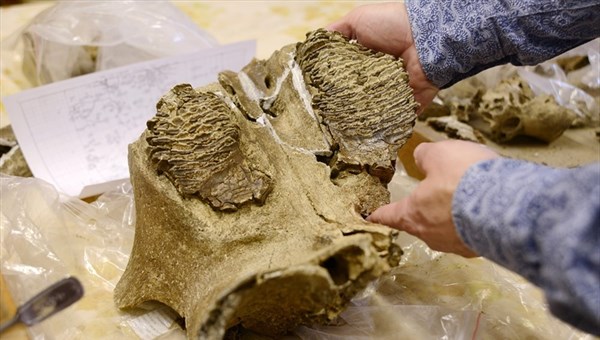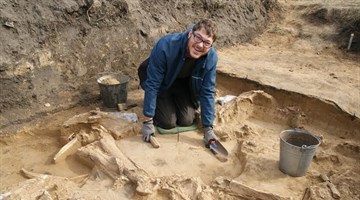© с сайта ТГУ
TOMSK,
Feb 18 – RIA Tomsk. Paleontologists of Tomsk State University (TSU)
shot a film about the largest in Asia late mammoths remains location,
found in Novosibirsk region; in this film scientists represent their
version of ancient animals extinction, the press-service of the
university informed.
Earlier
it was reported that in the summer of 2015 TSU paleontologists have
started to work on Barabinsk plain in Novosibirsk region where was a
refugium (one of the last habitats) mammoths. Here animals had "mud
bath" and vitamin "sanatorium" where they could find food with the
necessary minerals. Besides, it was possible to prove that in refugium
mammoths lived with people at the same time.
"The
plot of the film is about the expedition of TSU paleontologists on one
of the youngest mammoths locations in Eurasia. The finds made in 2015
during joint excavation of TSU researchers, Institute of Archeology and
Ethnography of the Russian Academy of Sciences' Siberian Branch and
University of Wroclaw, cast light on one of the greatest paleoecological
riddles – what was the reason of mammoths extinction", – said in a
statement.
© предоставлено пресс-службой Томского госуниверситета
It is specified that at many animals which remains were discovered in the Wolf's mane on Barabinsk
plain, diseases of skeletal system are found. Scientists believe that
exactly pathological changes of skeletal and cartilaginous tissues,
caused by metabolism infringement (mineral starvation), became the
reason of disappearance of these mammals.
It
is noted that in attempts to fill mineral starvation mammoths came to
Barabinsk plain. In excavation which was made here in September, the
concentration of their bones was more than two times higher, than on the
location of Bereleh in Yakutia, which is considered to be the largest
in Asia "cemetery" of mammoths.
"For
today (with taking into account excavations of the second half of XX
century) opened less than 3% of the explored burial area. Most of the
information is still hidden in the Wolf's mane, therefore the
researches, allowing to shed light on features of ecosystem existence at
the end of Pleistocene, will be continued", – added in the university.
